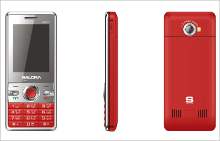Apple’s online storage service, iCloud, which was unveiled earlier this month, has attracted a lot of attention recently. According to a research, conducted by RBC Capital Markets, a whopping 76 per cent of iPhone users said they want to use the iCloud service. Surprisingly, 30 per cent users were ready to shell out $25 per year to buy iCloud’s iTunes Match service, which is good news for music labels which have signed the deal with Apple.
But will it be wise to spend money on iCloud?
First of all, it is a free service unless you want to use the iTunes Match service of iCloud which would cost you $25 (Rs 1,125 approx).
The Cloud Storage service does provide ease of use as users don’t have to download everything on to their handsets to use it. However, a user has to pay for the data charges whenever they access their data from the iCloud, which would cost them anything between Rs 400 to Rs 700 per month.
However, for the same amount, a user can download a significant amount of data on his handset. So cost wise, it would not make much difference to the users.
But, the benefit iCloud brings is the unlimited data storage facility.
iCloud allow users to sync all their photos, emails, apps, and other data across all their devices such as iPhone, iPod, and iPad. So when the users buy their Angry Birds game on an iPad, they can still access it from their iPhone, Mac or iPod.
The service which is getting most of the attention is Apple’s iTunes Music Match which will scan the users’ music and will replace random files with licensed high quality music. The licensed version of the music tracks will be sourced from 18 billion tracks strong iTunes music library. Such a collection of music definitely would attract iCloud’s potential users.
This is a feature which even Google or Amazon would not be able to replicate, since they do not have a deal with the music labels. Those who will use these services will have to own their music and upload it manually, whereas the Apple process will not take much time. At the same time, it’s not just the iPhone users who would be interested in the service, there would be many other users who would love to sync their apps and music between their desktop and iPad, so the potential is huge.
While cloud services from other companies are built more like a substitute for Microsoft Office’s web based version, iCloud concentrates mostly on the consumers – who own iPads and iPhones. It is designed by keeping the end users in the mind who can store and sync their music, documents, pictures, email and calendars in the cloud.
We have elucidated the facts before you, now its upto you to decide whether iCloud is worth your money or not.


